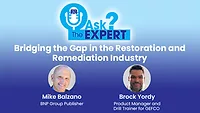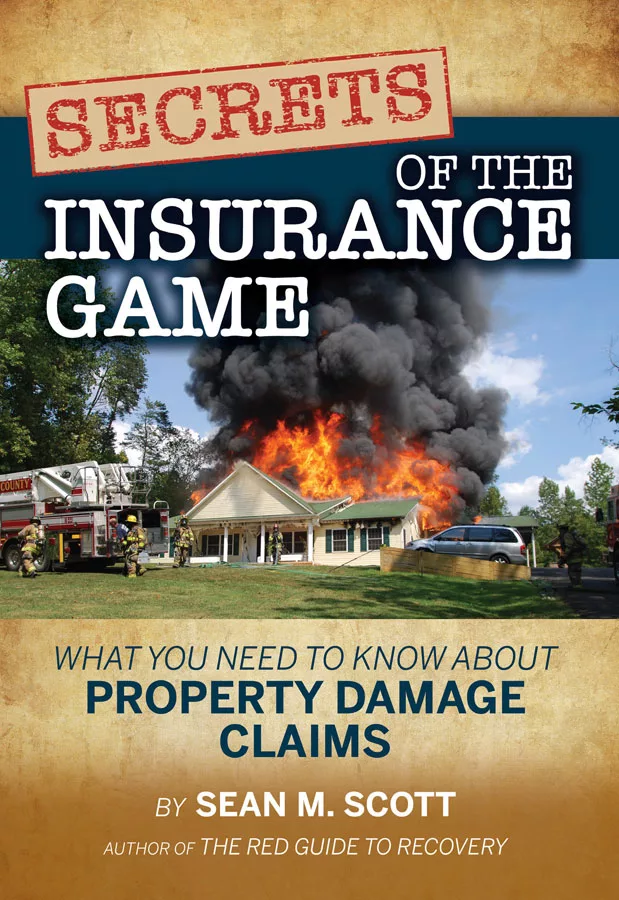Bridging the Contractor-Carrier Gap: Strategies for Improved Collaboration in Restoration

Photo: Michael SiberianArt / iStock / Getty Images
Home insurance premiums have jumped 17.4% since the first half of 2024 compared to 2023. Coupled with ongoing restoration contractor labor shortages, it’s putting immense stress on both industries. Ultimately, these challenges trickle down to the homeowners. Contractors, often understaffed and facing delayed restoration, find it challenging to meet demand. Restoration contractors, in particular, often play the role of the middleman, juggling the needs of homeowners, insurance requirements, and an arduous claims process. This intermediary role comes with unique challenges, particularly as the knowledge gap between contractors and insurance carriers widens.
The knowledge gap — a lack of mutual understanding between insurance carriers and contractors on how each party operates and the processes — adds another layer of complexity. For example, contractors may not grasp the regulatory pressures that lead to a carrier’s price adjustment or policy renewals, often resulting in frustration as they struggle with rising costs for materials and labor. This gap, coupled with an exodus of skilled restoration professionals, has left the industry in a state of uncertainty.
While carriers and contractors have historically been at odds, particularly throughout the repair process, technology presents an opportunity to bridge these divides and create a unified source of truth to foster trust and collaboration. By addressing this knowledge gap, homeowners stand to benefit from faster claims processing and shorter restoration timelines — ultimately getting them back into their homes sooner.
Fostering effective communication between carriers and contractors
Fractured communication and industry silos are intensifying the knowledge gap, complicating an already challenging process. Standardizing documentation and reporting could ensure that carriers and contractors share timely, accurate information. For both parties, effective communication hinges on access to high-quality data. Restoration professionals can work closely with insurance adjusters to help tell the restoration story more effectively, clearly laying out the unique challenges and key facts involved in restoration work.
Explaining issues such as unforeseen structural damage, material backorders, or the need to address poor workmanship from previous repairs helps carriers understand the factors that can increase costs and timelines to bring a home up to code. By opting for slightly more expensive materials that are more readily available, contractors can help expedite the restoration process and avoid Additional Living Expenses (ALE) that carriers incur while policyholders are in temporary housing. Open communication also enables contractors to gain insight into the regulatory factors that influence carriers’ decisions, helping them navigate the claims cycle more efficiently.
Education plays a crucial role, too. Both the restoration and insurance industries should prioritize training that prepares the next generation of professionals for effective collaboration. For instance, restoration programs could expand their curriculums to include regulatory insights and basic insurance principles. Insurance courses could incorporate overviews of restoration practices and relevant technologies. Cross-industry internships or apprenticeships can further knock down silos, allowing new contractors and insurance professionals to gain early exposure to each other’s challenges and develop skills for overcoming them.
Bridging the gap with technology
Technology holds great potential to close the knowledge gap, streamlining processes for contractors and carriers. From a cost-efficiency standpoint, leveraging technology can enable better communication, faster decision-making, and more accurate pricing strategies. One of the most critical junctures for collaboration is during the claims settlement process, where breakdowns in communication often lead to prolonged cycles. Digital tools and platforms that facilitate real-time updates are invaluable here, providing a reliable “single source of truth” that both parties can refer to.
Some examples of impactful technology include automation tools, immersive imagery documentation, and AI-partnered assessment platforms. Automation can streamline documentation processes, providing accurate imaging and data that contractors and carriers can use to align costs and timelines. Immersive imaging documentation, which allows contractors to create virtual models of properties, helps establish more explicit work timelines and enables carriers to process claims with enhanced accuracy. AI-partnered assessment tools are also increasingly popular, allowing contractors and carriers to analyze data, come to a mutually agreed upon estimate faster, and predict repair costs based on historical data and current risk models.
However, technology is only as effective as the data it relies on. Restoration and insurance professionals must ensure they are working with accurate, up-to-date information to avoid costly errors. AI tools, for instance, can only provide value if they are fed reliable data. This makes it essential for restoration and insurance partners to adopt these tools and maintain shared access to trustworthy, mutually understood and accepted data that keeps everyone aligned.
Preparing for the future with education, communication, and innovation
The pressures facing the restoration and insurance industries are likely to persist, with rising premiums, an uptick in severe weather events, and labor shortages continuing to have negative impacts. However, these challenges also present an opportunity to transform how these industries collaborate. By investing in education and training, carriers and contractors can better understand each other’s roles and responsibilities, paving the way for a smoother, more efficient claims process.
Technology will also play a pivotal role in the evolution. Whether through digital documentation, real-time updates, or predictive analytics, innovative solutions can significantly improve the claims experience for all stakeholders. Breaking down communication silos and using technology to establish a single source of truth between restoration and insurance teams promises to reduce claim cycles, accelerate repair timelines, and improve policyholder satisfaction.
While the relationship between carriers and contractors has often been marked by tension, there is no reason for it to stay that way. Through better communication, shared training initiatives, and cutting-edge technology, these two groups can come together to serve homeowners more effectively. As the industry embraces these strategies, both contractors and carriers stand to build a stronger, more collaborative relationship, ensuring that homeowners receive timely, quality restoration services when disaster strikes.
Looking for a reprint of this article?
From high-res PDFs to custom plaques, order your copy today!









